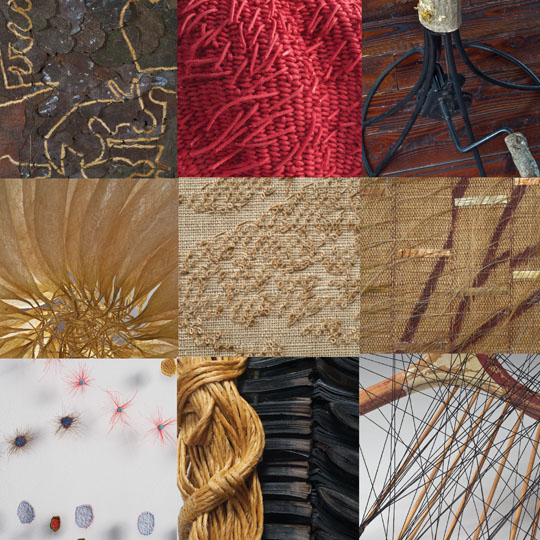We are very (and this will date me) jazzed about our 40th catalog, Stimulus: art and its inception. It’s a departure for us, not in the variety of artists and number of countries represented — sculpture, ceramics, art textiles and mixed media by 55 artists from 14 countries — but in what’s new — images and statements designed to give readers a sense of each artist’s creative process. For each of the pieces highlighted in exhibition, the process of finding an image to illustrate the genesis — whether an event, an object, an emotion, a place — and of working with the artists to share something of that process in words, was stimulating for Tom and me. We were also energized by working with Jane Milosch, Director, Provenance Research Initiative, Smithsonian Institution, and former curator, Renwick Gallery, Smithsonian American Art Museum, who writes about creativity and its embodiment in this exhibition in the introductory essay.
The stimuli identified by the artists in this catalog is diverse. Current events, like the earthquake in Japan and global warming, inspired some of the artists, including Norma Minkowitz, whose stitched wall work, Compound, illustrates the attack on Osama Bin Laden. “I began in a spontaneous, unplanned manner,” Minkowitz explains, “arranging lines and subtle patterns, until I had a feeling of the direction it would take. Suddenly the linear image took on the apparition of an aerial view of the compound that I had seen in a newspaper article. Compound combines a replica of the space and my vision of the event.”
Several artists, including John McQueen, Nancy Moore Bess, Lawrence La Bianca and Naoko Serino of Japan, have taken Nature as their inspiration. In Serino’s case, Generating-3 was inspired by a Philodendron selloum, which she tended for 22 years before it finally bloomed. Others were inspired by the efforts of previous artists. Ane Henriksen of Denmark, considered the work of coverlet makers from the 1800s; Adela Akers‘ work references Mbuti designs from Africa. Palimpsest 1, a wall piece by Marian Bijlenga, of the Netherlands, was composed by following the pinholes on the walls of Dutch masterweaver Herman Scholten’s studio to recreate the nearly erased surface.
Still other artists looked to their immediate surroundings. Trio 4, a sculpture of twine and newspaper by Kate Hunt, was inspired by the goats who share her studio. Echoed Surface, an energy-charged object by Randy Walker, was made from a charred and deformed badminton racquet that he found near his home; Re-Tire, is a basket Dona Anderson created from a tire chain she found by the roadside.
The catalog is 140 pages and contains 197 color photographs. It can be purchased on our website: http://browngrotta.com/Pages/c36.php



